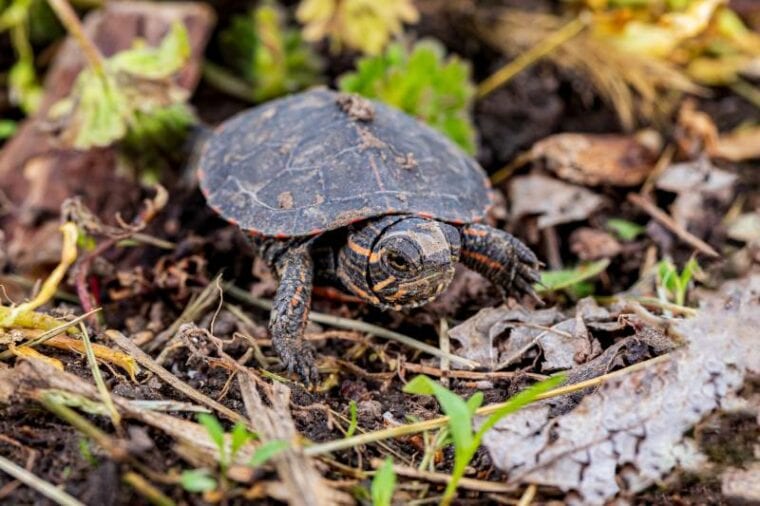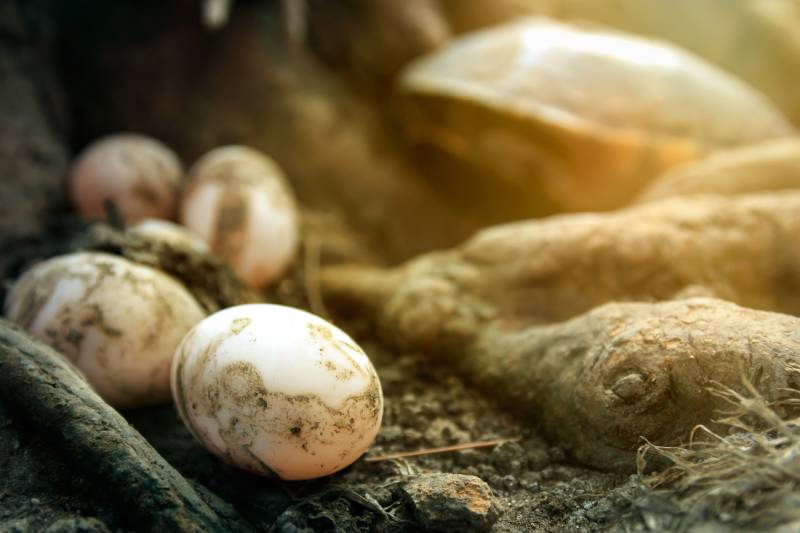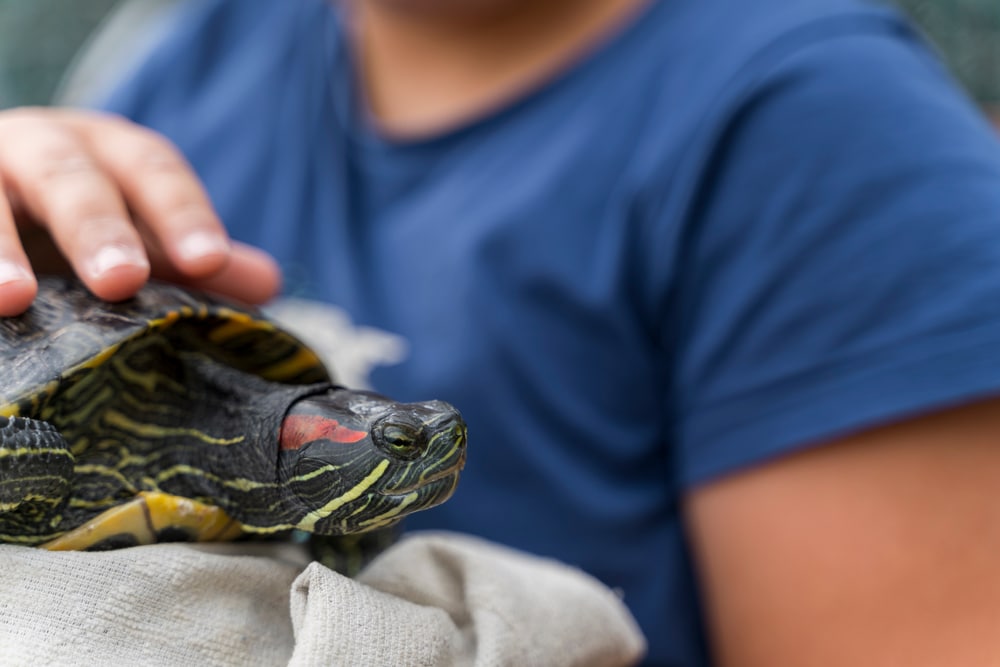
You may already know that female sea turtles leave the ocean at night and dig a nest in the sand to lay their eggs. They then cover their eggs with sand and head back into the ocean, leaving their eggs to incubate for the next few weeks. Freshwater turtles and tortoises are similar, the females will look for a suitable nesting site and lay their eggs but wont tend to them. Instead, turtles are born fully independent and able to fend for themselves.
Part of a turtle’s survival kit is their shell. You might be wondering if they already have a shell at birth, or if it comes in later. Turtle shells are formed during their embryonic stage, and when they hatch, and the baby turtle emerges, each one already has its shell.
These shells aren’t the hard and heavy shells that adult turtles are known to have, instead, they’re somewhat soft. However, the shell is still large enough for a turtle relative to their size at birth and offers them protection. As they grow, their bones calcify, and this results in a harder shell. There is so much to learn about these hatchlings and how they develop, so continue reading to discover the fascinating growth stages of a turtle.
The 4 Life Stages of a Turtle
1. Embryonic Stage Within Eggs

A female turtle can lay around several eggs in a nest, which is called a clutch. However, this does vary between the different turtle species, with some laying an average of 50 eggs and others laying up to 200 eggs. It is possible, and even likely, that one nest will have hatchlings from several males. No turtle species lay their eggs in water, though some may mate in water.
A turtle egg is typically round, though some species like the Eastern box turtle (Terrapene carolina carolina) may lay slightly elongated eggs. Not all eggs in a clutch will develop into a hatchling, as some can be infertile. A female pet turtle may lay eggs in the absence of a male, these eggs should be discarded as infertile eggs will eventually spoil.
Interestingly, it’s the temperature of the nest that determines whether the majority of the eggs will be female or male. Eggs buried in warmer temperatures will have more females, and eggs buried in cooler temperatures will result in a higher number of males.
2. Hatchlings

A newborn turtle is considered a hatchling for the first few days of life. Though small, they are fully independent and don’t need the guidance of adult turtles to survive. Hatchlings of almost all turtle species are especially vulnerable to predators, this risk is especially high in the first few days of life.
Sea turtle hatchlings instinctively make a break for the ocean when they hatch. Freshwater turtles, other land turtles, and tortoises don’t migrate and instead remain in the area where they were born for life.
3. Juvenile Turtles

Turtles are classified as juveniles between the time when their shells have hardened and calcified after hatching and the attainment of sexual maturity. The time a turtle is considered a juvenile varies according to their species. Generally speaking, almost all species of turtles remain juveniles for a considerable number of years.
As juveniles, turtles often have slightly different dietary requirements than their adult counterparts. They often require higher amounts of protein to ensure proper growth and development of their shells. As pet owners though, it is crucial to remember that overfeeding a turtle at this stage of their life is very dangerous for their long-term health, as it can lead to weight gain and a condition known as shell pyramiding.
4. Adult Turtles

Turtles are considered adults when they are able to mate and reproduce. They remain in this life stage for the overwhelming majority of their lives. For many species, it is difficult to attain adulthood, however, as adults, many species have almost no natural predators. Although dependent on the species of turtle, turtles can live anywhere from 10 to 150 years.
Senescence, or the onset of seniority and deterioration with age, isn’t a phenomenon that turtles seem to display. Several species of turtles remain active as reproductive adults even when beyond 100 years of age.
What Happens to a Turtle’s Shell When It Dies?
Apart from being eaten or attacked by predators in the wild, a large number of turtles die each year because of humans and their impact. Sea turtles often die from being tangled in fishing nets, being caught on fishing hooks, being hunted for their meat, eggs, and shells, and due to the destruction of their habitats because of new buildings and other coastal development. Freshwater turtles and tortoises are often impacted by motor vehicle accidents, illegal capture for the pet trade, deforestation, invasive species introduction by humans, and in some countries, the meat trade.
When a turtle dies, their body will decompose quickly, but the shell will not. The shell is part of the turtle’s skeleton and consists of bone, the rib cage, and the spinal cord. Anecdotally, the shell can take around 50 years to decompose (though actual durations may vary), so many pet owners keep the shell of their passed turtles as a keepsake. In the wild, other sea creatures may live in empty turtle shells, or you may stumble upon a sand-filled one on the beach. Environmental factors may hasten the rate of decomposition 1.

Conclusion
A turtle is born with their shell, and they will have the same one until they die. Hatchlings have soft shells, but as they grow and develop, these shells will harden to protect them from danger. Although turtles decompose quickly when they die, the shells will likely stay intact for around for several decades on average. This often allows their owners
Related Reads:
Featured Image Credit: JJ Gouin, Shutterstock









